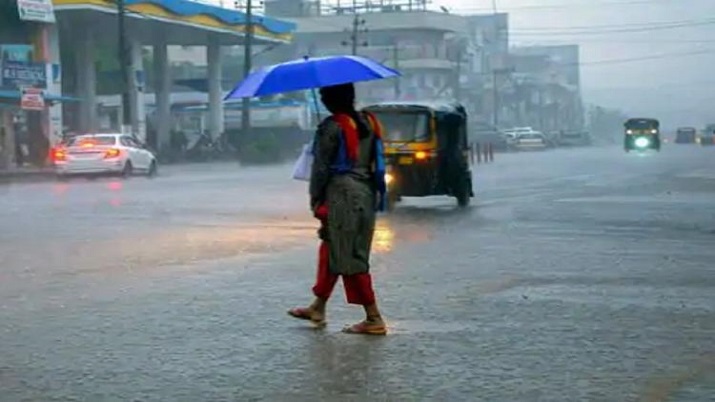
Kerala on the edge: Non-stop rain sparks fear of flash floods, cloudbursts

Three days of continuous downpour in Kerala have raised fears of flash floods and cloud-bursts, reminding people of 2017 and 2018 deluges.
The Indian Meteorological Department (IMD) stated that a cyclonic circulation lies over Kerala and neighbourhood states leading to heavy to very heavy rain across all districts of the state for the last three days.
The latest forecast has put northern districts on high alert for the coming three days. A control room has been opened at the secretariat and in a few districts. The continuing rain has resulted in heavy loss to standing crop at several places.
Water-logging and landslides
Water-logging has been reported in low-lying areas of Kottayam and Idukki districts in Central Kerala. Landslides have been reported in some forest areas of Kottayam, but there have been no causalities. In Kollam, Kottayam, Alappuzha and Pathanamthitta districts, May 17 was announced as holiday in educational institutions.
“It is not possible to know if a flood would occur, but it is very likely to happen if the rainfall persists for a few more days,” said Dr S Abhilash, associate professor at the Department of Atmospheric Science in Cochin University of Science and Technology. Past experiences strengthen this concern as uninterrupted rain leads to landslides.
Also read: As monsoon approaches, Kerala readies for familiar battle with disease outbreaks
Experts say Kerala’s rainfall pattern has changed for worse over the years. Before 2018, daily rain won’t usually cross the 10-20 cm figure. But now the rain gauge could record about 20 cm of rainfall at a particular place within two to three hours! “Neither our soil nor the water bodies or drainage systems have the capacity to accommodate such a heavy fall in such a short period of time,” says Dr Abhilash.
Deep convection
A recent study done by the Cochin University of Science and Technology finds a shallow to deep transformation in the cloud depth over the west coast of India (72–78°E, 8–23°N) during the last four decades (1980-2019) of monsoon season. The study suggests that summer monsoon rainfall is significantly controlled by convection, and the increasing trend of rainfall and its intensity, reveals the strengthening of deep convection during the recent epoch.
“Results suggest an ice-rich cloud population in the recent decade, indicative of an increasingly convective character of rain-making processes over the west coast of India. This is connected to Arabian Sea warming, greater instability and strengthened monsoon ascent over western India. If these trends are part of a forced climate signal, they may be likely to continue,” says Dr Abhilash.
Also read: Kerala model death: Police take 20-year-old Shahana’s husband for questioning
Kerala has been hit by heavy rainfall, flash floods and landslides since 2017. Heavy casualities due to major landslides have become an annual occurrence now. About 70 people died in a landslide in Pettimudi in Munnar in 2020 and 46 people lost life in Kavalappara in Malappuram district in 2019. Hundreds of minor landslides happen deep inside forests every year with no human causalities.


